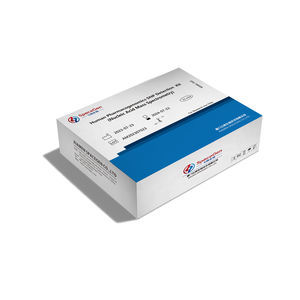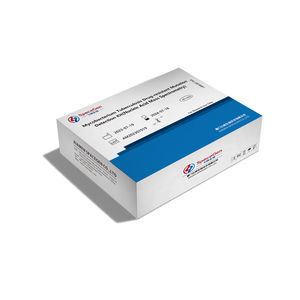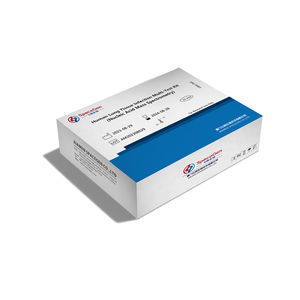

- Company
- Products
- Catalogs
- News & Trends
- Exhibitions
Research detection kit AM202308025Candida albicansCandida glabrataCandida krusei
Add to favorites
Compare this product
fo_shop_gate_exact_title
Characteristics
- Applications
- for research
- Micro-organism
- Candida albicans, Candida glabrata, Candida krusei, Cryptococcus neoformans
- Sample type
- clinical, biological, cell, tissue
- Analysis mode
- molecular, nucleic acid mass spectrometry
Description
With the widespread use of hematopoietic stem cell transplantation, solid organ transplantation, immunosuppressive agents, chemotherapy drugs, and various invasive procedures, the incidence of invasive fungal infections in the lungs is gradually increasing. Patients with pulmonary fungal infections often lack specific symptoms, and early diagnosis is challenging. The condition is easily masked by underlying diseases, leading to misdiagnosis, missed diagnosis, and delayed treatment, resulting in a high mortality rate. Therefore, accurate detection of invasive fungal infections in lung tissue is crucial for the diagnosis and treatment of the disease.
DETECTION METHOD
Matrix-Assisted Laser Desorption/Ionization Time-of-Flight Mass Spectrometry (MALDI-TOF-MS) is a novel technique used for the analysis of biological molecules. It involves the formation of a thin co-crystallized film by irradiating the sample with a laser in the presence of a matrix. The matrix absorbs energy from the laser and transfers it to the biological molecules, causing their ionization. The ionized molecules are then accelerated through a flight tube by an electric field, and their time of flight to the detector is used to accurately determine their molecular weight, allowing for precise identification and separation of biomolecules.
DETECTION SIGNIFICANCE
Accurate identification of the 30 common invasive fungal species in clinical settings provides a clear understanding of the pathogenic organisms and offers a scientific basis for anti-infective treatment.
Catalogs
No catalogs are available for this product.
See all of SPACEGEN‘s catalogsRelated Searches
- Assay kit
- Blood assay kit
- Immunoassay assay kit
- Plasma assay kit
- Infectious disease detection kit
- Analysis medical software
- Molecular test kit
- Whole blood detection kit
- Respiratory infection test kit
- Optical assay kit
- Clinical assay kit
- Fluorescence assay kit
- Viewer software
- Real-time PCR test kit
- Research assay kit
- Laboratory software
- Oncology test kit
- Windows medical software
- Laboratory detection kit
- Cell assay kit
*Prices are pre-tax. They exclude delivery charges and customs duties and do not include additional charges for installation or activation options. Prices are indicative only and may vary by country, with changes to the cost of raw materials and exchange rates.




